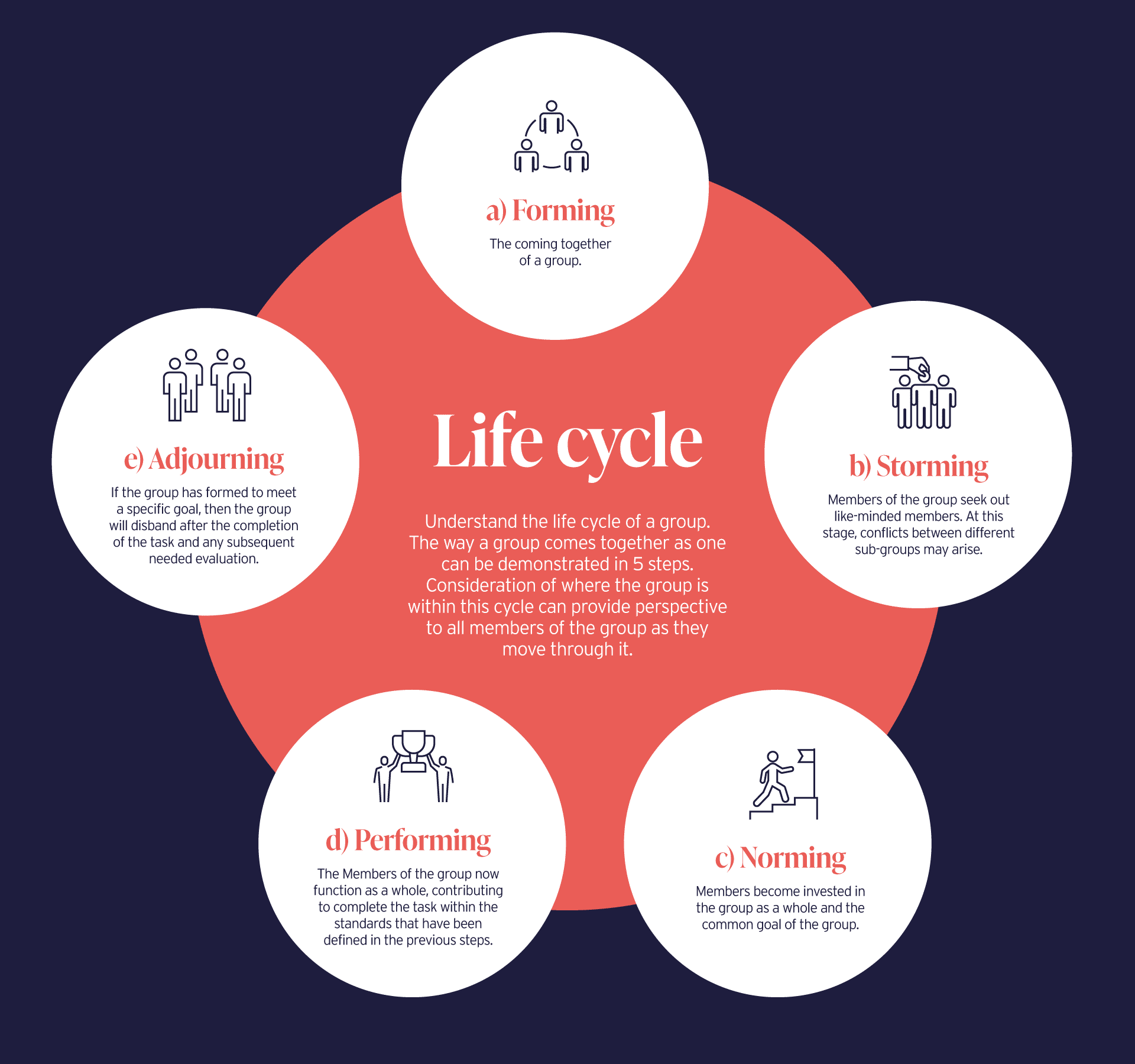Creating Your Culture

What is Company Culture
Every company has their own culture and we don’t realise just how naturally this is created by the leadership.
I did an MBA study with a friend. He was looking at how the CEOs of companies’ values and personalities actually create a culture without them realising it. Most companies will work hard to create their own culture, even if the leadership might be slightly different or not aligned to that.
One of the biggest benefits to the employer is loyalty. Us as a company, if we create the right culture, where people feel happy, people feel safe, they feel valued they feel appreciated, they feel like they’re part of a team – they will always loyal to a company


Understanding and influencing team dynamics
A sound understanding of team/group dynamics, and the role it plays in business, is a critical component of successful management.
When a good dynamic exists within a group working toward a common goal, each individual member will perform effectively and achieve goals set by the group.
Poor group dynamics can adversely affect performance, leading to a negative outcome on the common goal or project.
Many variables contribute to a good work dynamic. Below are 4 key points to understanding group dynamics, and how to create and maintain a positive, productive dynamic in any group.
Personalities
Recognize how personalities affect team dynamics. We use two tools to professionally understand the personality profiles of each team member.
The MBTI and the ProfileXT Team assessments both have their unique benefits and help to highlight team dynamics and how to constructively manage your team.
Obviously each person working within a group brings to that group his or her own individual personality and skill set. Recognizing each person’s style of work, motivation, and level of aptitude can help a manager understand how that person fits within the group as a whole.
This can also provide an opportunity for managers to note any gaps in experience or behavior that need to be filled with additional team members in order for the group to successfully accomplish its goal.
Along with members who contribute positively to the group, there may also be those whose behavior, attitude, or work style negatively affects the dynamics of the overall group. Some may be obvious- an aggressive personality dominating and bullying other group members, or a distracting person who is constantly off-task.

Some disruptive roles may be less easy to pinpoint, but can have an adverse effect on group dynamics as well. For example, “social loafing” may occur, meaning some members of the group may exert less effort than they would if working alone.
A manager who recognizes and reacts quickly to these roles can influence the dynamic of the group in positive ways. A dominating or distracting member of the group may benefit from a separate conversation with the manager, addressing expectations of roles within the group.
If each member of the group sees his or her contribution as valuable and accountable to the larger group, then social loafing is less likely to occur among group members.

Life cycle
Understand the life cycle of a group. The way a group comes together as one can be demonstrated in 5 steps:
a) Forming– The coming together of a group.
b) Storming– Members of the group seek out like-minded members. At this stage, conflicts between different sub-groups may arise.
c) Norming– Members become invested in the group as a whole and the common goal of the group.
d) Performing – The Members of the group now function as a whole, contributing to complete the task within the standards that have been defined in the previous steps.
e) Adjourning– if the group has formed to meet a specific goal, then the group will disband after the completion of the task and any subsequent needed evaluation.
Consideration of where the group is within this cycle can provide perspective to all members of the group as they move through it.

Communication is key
How effectively a group communicates can determine the overall success or failure of the group in reaching its goal. Many methods of communication may be used within groups working toward a common business goal.
Emails, project management software, group documents, and video/telephone conferencing are some of the many ways that the traditional face-to-face group meeting is becoming less prevalent.
It is imperative for all members of a group to fully understand and utilize the chosen methods of communication. Open and transparent communication through the group’s chosen methods of communication builds and maintains a sense of trust within the group as a whole, and keeps the group working together toward the goal.
Side conversations via separate emails or “IM” chat features can be detrimental to the group’s overall trust.
Additionally, the manager of the group should assure that all members can effectively communicate needed information to the group. This could require additional training on programs, or assistance in clearly presenting information so all members have the benefit of full understanding of information.
